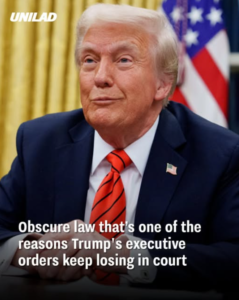President Donald Trump’s executive orders have faced significant legal challenges, often resulting in court rulings that block or invalidate them. One of the primary reasons for these setbacks is the separation of powers doctrine, a fundamental principle of the U.S. Constitution that delineates the distinct roles and powers of the legislative, executive, and judicial branches.
Separation of Powers and Executive Authority
The separation of powers ensures that no single branch of government becomes too powerful by granting each branch specific responsibilities and the ability to check the others. The executive branch, led by the President, is responsible for enforcing laws, while the legislative branch (Congress) creates laws, and the judicial branch interprets them. This framework prevents any branch from overstepping its constitutional boundaries.
Challenges to Trump’s Executive Orders
Several of President Trump’s executive orders have been challenged on the grounds that they overstep executive authority and infringe upon legislative powers. For instance, his directive to withhold federal funds from sanctuary cities was contested because it attempted to impose conditions on federal funding without congressional approval, potentially violating the Constitution’s spending clause. Similarly, attempts to end birthright citizenship through executive action were deemed unconstitutional, as the 14th Amendment grants citizenship to all individuals born in the U.S., and such a change would require a constitutional amendment, not an executive order.
Implications of Overstepping Executive Authority
When executive orders exceed the President’s constitutional authority, they are subject to judicial review. Federal courts have the power to invalidate executive actions that violate the Constitution or federal law. This system of checks and balances ensures that executive actions remain within the bounds set by the Constitution and prevents the abuse of power.
Conclusion
The separation of powers is a cornerstone of American democracy, designed to prevent any single branch from gaining unchecked power. President Trump’s executive orders have faced legal challenges because some have been perceived as infringing upon legislative powers or violating constitutional principles. Understanding and respecting the separation of powers is crucial for the proper functioning of the U.S. government and the protection of individual rights.


